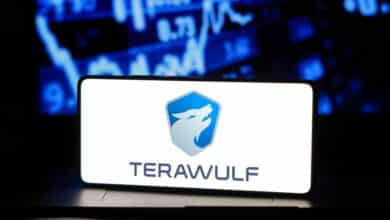Real Yield in Decentralized Finance – All You Need To Know

In the context of decentralized finance (DeFi), real yield refers to the actual return on investment that an investor receives after taking into account the effects of inflation. In other words, it is the yield adjusted for the rate of inflation.
In traditional finance, yields on investments are typically reported in nominal terms, which means they do not account for inflation. However, in DeFi, where many investments are denominated in cryptocurrencies that can be highly volatile, it is important to consider the impact of inflation on returns.
Real yield is calculated by subtracting the inflation rate from the nominal yield. For example, if an investment in a DeFi protocol earns a nominal yield of 10%, but inflation is running at 5%, the real yield would be 5%.
Real yield is an important metric to consider when evaluating the performance of DeFi investments, as it gives a more accurate picture of the actual return on investment. It also helps investors to make informed decisions about where to allocate their capital in order to maximize their returns in real terms.
Yield farming in DeFi: what is it?
Decentralized Finance (DeFi) yield farming is a way to earn passive income by providing liquidity to various DeFi protocols. Essentially, yield farming involves lending your cryptocurrency assets to DeFi protocols and earning interest on them. The interest earned is often paid out in the same cryptocurrency as the one you deposited or in a different cryptocurrency.
Yield farming usually involves using decentralized exchanges (DEXs) or automated market makers (AMMs) to provide liquidity to pools. In return for providing liquidity, yield farmers receive a reward in the form of a percentage of the trading fees collected by the protocol.
Yield farming rewards can come in many forms, such as tokens, governance tokens, or even NFTs. However, it is important to note that yield farming is not risk-free, and the rewards earned can fluctuate greatly depending on market conditions and the specific DeFi protocol being used. Therefore, yield farming requires careful consideration of the risks involved before investing in any protocol.
Sustainable and real yield versus dilutionary emissions
DeFi’s sustainability is a key consideration when evaluating its yield. This means that DeFi projects can be expected to continue operating for an extended period of time, providing benefits to their participants. If the revenue of the revenue is sufficient to cover the number of tokens being distributed to stakeholders, then its own funds will not be depleted.
The project can theoretically keep the same annual percentage yield (APY) in the event the revenues remain unchanged. However, it is also common for projects to experience dilution – when their APY is distributed in a sense that is not sustainable in the long term, generally by depleting their treasury. If the revenue of the project doesn’t increase, it will be difficult to keep the same interest rate.
The cryptocurrency real yield metric is a way to assess a project’s potential yield in relation to its revenue. It takes into account the price of the cryptocurrency and the projected annual revenue.
The cryptocurrency real yield metric shows you how much of the rewards from a project are going to token holders versus coming from project revenue. This is important information if you want to make sure your tokens are worth something.
Does the use of real yield improve decentralized finance?
Relying on real yield can potentially make DeFi better by providing a more accurate measure of the returns that users can expect to earn on their investments. By factoring in the impact of inflation, users can make more informed decisions about which protocols to participate in and which assets to invest in.
However, relying solely on real yield may not necessarily make DeFi better in all cases. Real yield can be affected by a variety of factors, including changes in inflation rates and fluctuations in the value of the underlying asset. Additionally, some DeFi protocols may offer higher nominal yields but may also carry higher risks, which may not be reflected in the real yield calculation.
Conclusion
Real yield in DeFi refers to the actual return on investment (ROI) that an investor earns after taking into account the impact of inflation on their earnings. In other words, it is the yield that an investor earns after adjusting for inflation.
Tokenhell produces content exposure for over 5,000 crypto companies and you can be one of them too! Contact at info@tokenhell.com if you have any questions. Cryptocurrencies are highly volatile, conduct your own research before making any investment decisions. Some of the posts on this website are guest posts or paid posts that are not written by Tokenhell authors (namely Crypto Cable , Sponsored Articles and Press Release content) and the views expressed in these types of posts do not reflect the views of this website. Tokenhell is not responsible for the content, accuracy, quality, advertising, products or any other content or banners (ad space) posted on the site. Read full terms and conditions / disclaimer.







